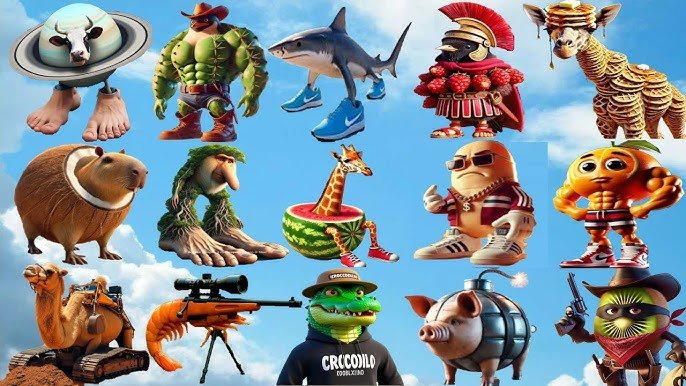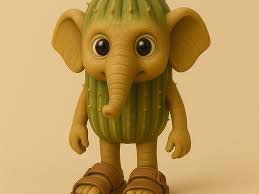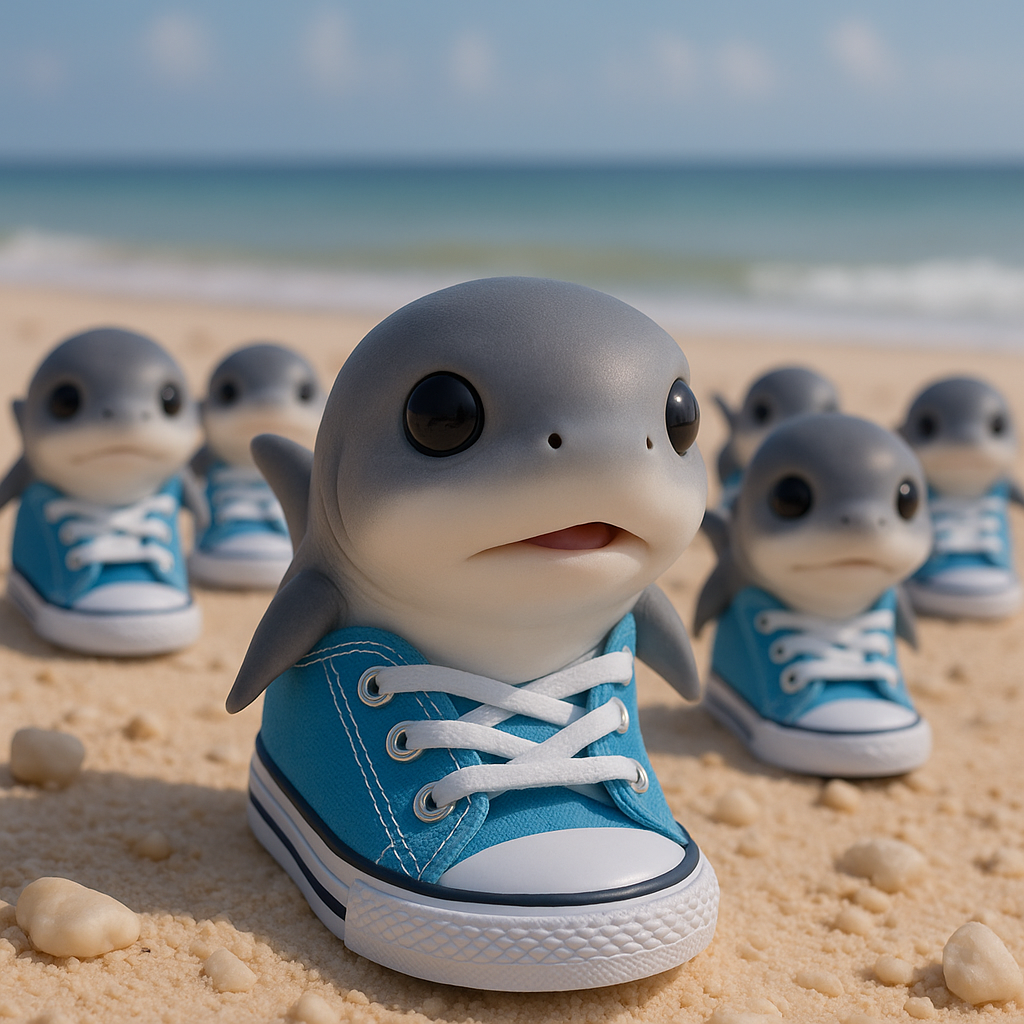Introduction

In early 2025, a bizarre trend emerged from the depths of TikTok and spread like wildfire across the internet. Known as the Italian Brainrot Meme, this movement combines surreal AI-generated images, nursery-rhyme-style text-to-speech audio, and hyper-saturated editing into what can only be described as visual and auditory chaos. But beneath its ridiculous surface lies a fascinating world of emergent lore, meme world-building, and cultural commentary on the state of generative media and online humor.
This article dives deep into the phenomenon, exploring its origins, key characters, community evolution, and the broader implications for internet culture.
Origins of the Italian Brainrot Meme
The Italian Brainrot Meme, also dubbed AI Italian Animals, first gained traction in January 2025 on TikTok. The earliest viral instance was created by user @eZburger401, featuring a generative AI image of a shark wearing Nike sneakers paired with a male Italian text-to-speech voice delivering a chaotic monologue:
“Trallallero Trallallà, porco dio e porco Allah. Ero con il mio fottuto figlio merdardo a giocare a Fortnite, quando a un punto arriva mia nonna, Ornella Leccacappella…”
While the user was later banned, the sound spread quickly. Another user, @elchino1246, re-uploaded the original audio with an AI-generated image of a shark with pigeon legs. The absurd pairing of hyperreal visuals and aggressively irreverent Italian audio instantly resonated, and within days, the meme spiraled into virality.
The Aesthetic of Brainrot
Brainrot was the Oxford Word of the Year in 2024, and for good reason. It encapsulates a style of content that’s intentionally lowbrow, overloaded, and nonsensical—designed to simulate (or induce) a sense of mental deterioration.
This aesthetic is an evolution of previous meme forms like:
- MLG montage memes
- Dank memes
- Deep-fried memes
- Sludge content (e.g., Subway Surfer + Skibidi Toilet splitscreens)
- AI Slop (a term for generative AI meme content)
Italian Brainrot Memes build on this lineage but add an entirely new layer: generative world-building. What started as individual shitposts has turned into an interconnected universe of recurring characters and narrative arcs.
Key Elements of Italian Brainrot Meme
1. Characters
These memes revolve around bizarre characters created by AI image generators. Some of the most iconic include:

- Tralalero Tralala – A shark wearing Nike shoes.
- Bombardiro Crocodilo – A military plane with a crocodile face.
- Lirilirilarilà – A cactus-elephant hybrid walking in a desert with sandals and a ticking clock.
- Brr Brr Patapim – A forest-monkey hybrid with massive feet.
- Boneca Ambalabu – An Indonesian frog-tire-human-leg creature.
Each character typically appears alongside rhyming, nonsensical narration delivered via ElevenLabs text-to-speech, overdramatic music, and visual effects from CapCut like fire transitions or zooms.
2. Audio and Language
Italian nursery-rhyme cadence is central to the humor. These phrases are purposefully surreal and often profane, mixing religious blasphemy, childish slang, and gibberish.
For example:
“Lirilí Larilà, elefante nel deserto che cammina quà e là con la sua conchiglia…”
The same formula has inspired spin-offs in other languages, especially Indonesian Brainrot, with characters like Tung Tung Tung Sahur and Hotspot Bro, mimicking local cultural rhythms.
3. Visual Style
Images are intentionally chaotic or uncanny. AI tools like DALL·E, Midjourney, or Stable Diffusion generate animals with sneakers, planes with human features, or cacti with elephant trunks.

These images often appear janky, asymmetrical, or unsettling, leaning into the “this shouldn’t exist” aesthetic. The low-effort look is part of the joke—bad taste as cultural rebellion.
Italian Brainrot Lore and World-Building
What sets the Italian Brainrot Meme apart from previous meme trends is its shift toward a shared universe. Each character, while initially standalone, has gradually been woven into an emergent meme multiverse.
Characters like Cappuccino Assassino—initially forgotten—were revived through fan-created arcs involving his wife Ballerina Cappuccina, and their associates Ballerino Lorololo and Espressona Signora. A bizarre sitcom-like canon evolved through shared TikToks, edits, and fan fiction, with character tier lists and rivalries.

Just like how the “E” meme in 2018 merged absurdity and recognizability (Markiplier, Lord Farquaad, and Zuckerberg), Brainrot memes create narratives not from coherence, but from shared absurdity and repetition.
Virality and Spread
From January to April 2025, the Italian Brainrot trend exploded across TikTok and YouTube. Highlights include:
- @amoamimandy.1a’s TikTok on Jan 13, 2025, featuring the Nike-wearing shark, racking over 17 million views.
- @tjantv’s Brainrot tier list on March 14, gaining 7 million+ plays in five days.
- @nazarsmemes’ compilation of all known characters.
This participatory community is what fuels the meme’s staying power. Each remix, video edit, or image variation adds to the ecosystem.
Why AI?
Generative AI is key to this movement. Without skill barriers, anyone can produce absurd images like “a cactus with sandals and a clock in the desert.” The tools aren’t trying to mimic realism—they’re mimicking meme logic: the weirder, the better.

Importantly, only certain images “stick.” Out of a hundred shark-in-shoes generations, only one becomes the Tralalero Tralala. Like the Balenciaga Pope, meme identity depends on iconography, not repeatability.
From Shitpost to Scam
A viral fake toy ad pretending to sell Italian Brainrot figurines used AI video tools like KLING and 4o, fooling millions. The creator received endless DMs asking how to purchase the toys—proof that generative content can easily pass as real.
Some fans even started 3D-printing characters like Bombardiro Crocodilo, turning AI slop into physical products. This raises questions:
- Who owns Brainrot characters?
- Can meme IP be protected?
- What happens when AI memes spawn real-world markets?
The Future of AI Brainrot
This genre could fizzle out in months, or it could evolve into something greater—TV shows, games, even movies. But generative media excels at short-form chaos, not full narrative arcs. And maybe that’s the point.
Brainrot is funny because it isn’t curated by studios. It’s born from creative anarchy, mocking both AI itself and the idea of traditional media ownership.
If AI was supposed to democratize creativity, this is what it looks like: a shark in Nikes, shouting profanity at God while Fortnite loads in the background.
Conclusion
The Italian Brainrot Meme isn’t just a chaotic trend. It’s a mirror reflecting internet absurdism, AI’s cultural role, and the meme community’s power to generate lore and worlds from nonsense. It takes what generative tools offer—low friction creation—and runs with it into surreal, juvenile, and strangely compelling directions.
It may be slop, but it’s our slop.
